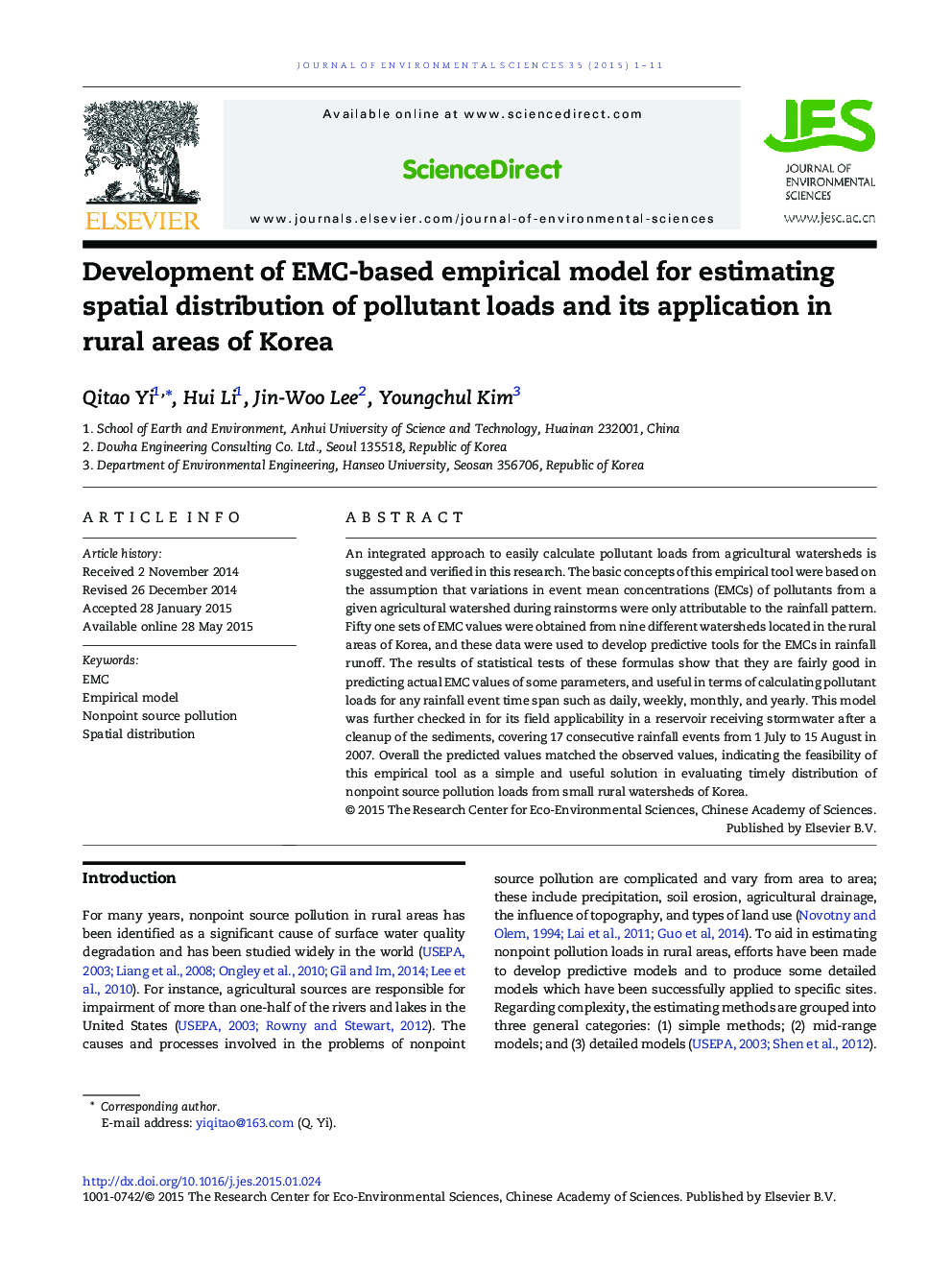| Article ID | Journal | Published Year | Pages | File Type |
|---|---|---|---|---|
| 4453923 | Journal of Environmental Sciences | 2015 | 11 Pages |
An integrated approach to easily calculate pollutant loads from agricultural watersheds is suggested and verified in this research. The basic concepts of this empirical tool were based on the assumption that variations in event mean concentrations (EMCs) of pollutants from a given agricultural watershed during rainstorms were only attributable to the rainfall pattern. Fifty one sets of EMC values were obtained from nine different watersheds located in the rural areas of Korea, and these data were used to develop predictive tools for the EMCs in rainfall runoff. The results of statistical tests of these formulas show that they are fairly good in predicting actual EMC values of some parameters, and useful in terms of calculating pollutant loads for any rainfall event time span such as daily, weekly, monthly, and yearly. This model was further checked in for its field applicability in a reservoir receiving stormwater after a cleanup of the sediments, covering 17 consecutive rainfall events from 1 July to 15 August in 2007. Overall the predicted values matched the observed values, indicating the feasibility of this empirical tool as a simple and useful solution in evaluating timely distribution of nonpoint source pollution loads from small rural watersheds of Korea.
Graphical abstractFigure optionsDownload full-size imageDownload as PowerPoint slide
